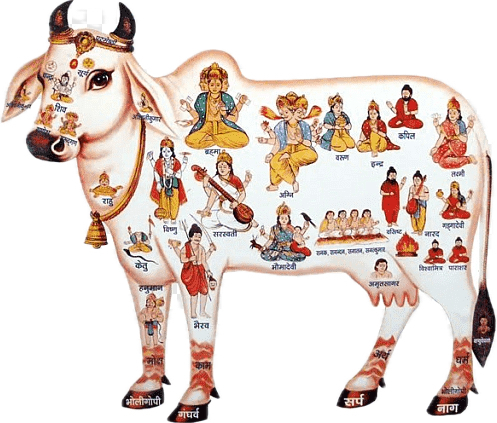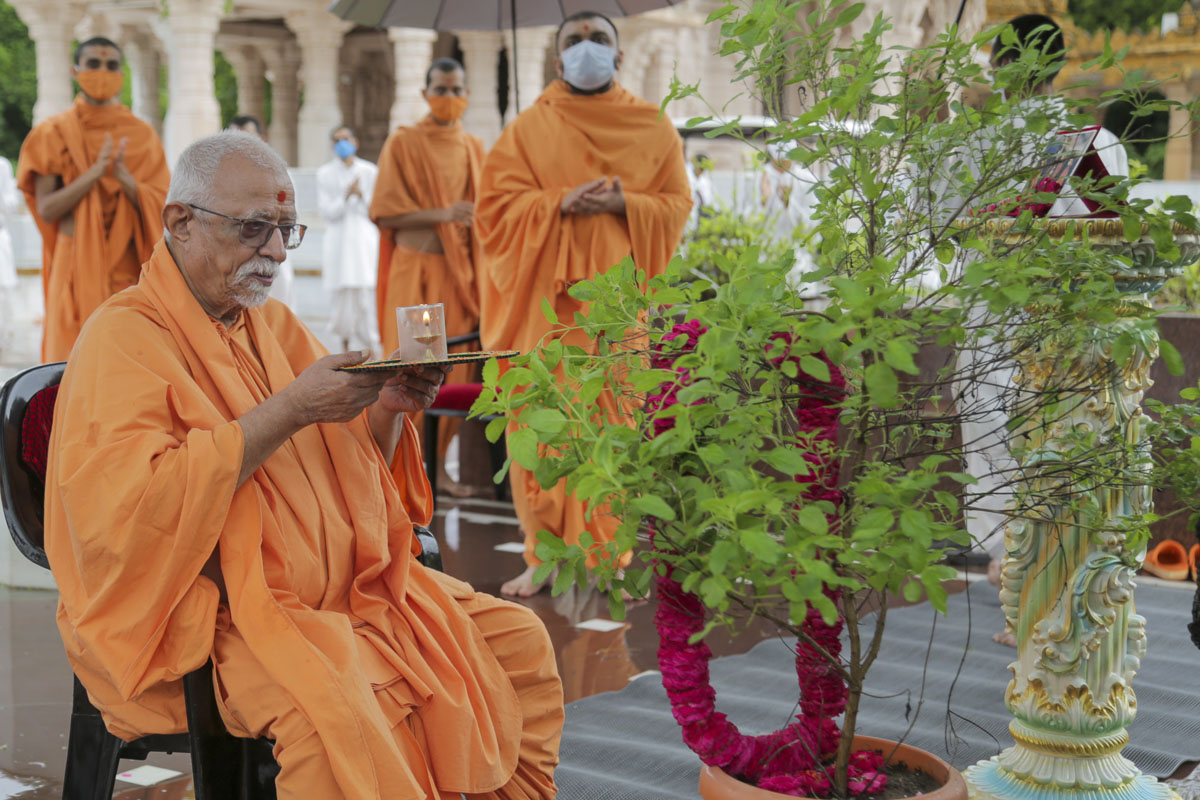Harmonious relationships reflect healthy and desirable ecological balance. Human being plays a key role to maintain ecological balance because they have the highest thinking capacity as compared to other living organisms. Sufficient food availability to all living organisms and their stability reflect the existence of ecological balance. It has been established by ecological studies that all living organisms are inter-connected and integrated. All have to be protected for the well- being of the world. Therefore, this balance is very important because it ensures survival, existence and stability of the environment. Shloka जीवो जीवस्य भोजनम्' Hunting one animal by another for food. There is no violence in it. A frog hunts small insects and the same frog itself becomes the food of a snake. Similarly, a snake is also prey to eagles, etc. The food of a big fish is small fish floating in the sea. According to a natural law, everyone makes each other's diet. 'Jeevo jeevasya bhojaanam' means that jeeva is the food of an organism. When a lion hunts an antelope for food, there is no sense of violence within it. He is doing all this to satisfy his hunger. According to the Hindu scriptures, in this beautiful Vishvavasudha, a total of 84 lakh yonis exist. Among this Human being is considered as most superior cunt. It also has a system of rebirth depending upon ones deeds during human life. The Theme of Preserving Ecology is imparted through the Samskaram of Reverence for all Living beings and Plants Symbolised by Gaja [elephant] Vandanam, Gau [cow] Vandanam and Tulasi [plant] Vandanam. Cow, Elephant and Tulasi Symbolise all living beings and organisms.
1. Gau Vandanam
Cow is an ideal animal in Deity Bramha’s creation. As per spiritual science, the four Purushārthas, namely, Dharma, Artha, Kāma, and Moksha can be acquired by serving the cow. While praising the cow, the principal Deities, namely, Bramha, Vishṇu and Shiva have narrated the following shloka:
त्वं माता सर्व देवानां त्वं च यज्ञस्य कारणम्।
त्वं तीर्थ सर्वतीर्थानां नमस्तेस्तु सदानधे।

Meaning: O Destroyer of sins! You are the mother of all Deities. You are the reason for yagna (sacrificial fire). Among all Tirthas (Holy places), you are the holiest. I pay my obeisance to you. Hindus consider Cow as an adobe of 33 crore Hindu Deities and hence Cow is considered as sacred in Hindu Dharma. Cow is treated as the highest and most pious animal and is given the utmost importance, being at the apex in the Animal world. The belief is that one can attain salvation (Moksha) by worshipping the Cow and serving her and both Lord Krishna and Balram spearheaded the “Cow worship and preservation” culture. The first Jain Tirthankar, Adinath was also named as Vrashbh meaning ‘Oxen Sorub’
2. Gaja Vandanam
Gaja (Elephant) has an important place in Vedic scriptures. The elephant is a very powerful and significant symbol in the Hindu faith. Gaja is considered to be powerful not only because of its sheer physical size but also due to its ability to hold good prana within itself. It inhales a lot more than it exhales and holds the secret for longevity. Gaja have incredible intelligence and their mere presence could calm people down. Gaja though is huge in size but is an herbivores (vegetarian) animal. It signifies that we human beings should respect the food chain created by nature and thus preserve the Ecology. Below, behind, of Lakshmimata we see two elephants, known as Gajalakshmi, Gaja symbolize work, activity and strength, as well as water, rain and fertility for abundant prosperity.

3. Tulsi Vandanam
One plant you are bound to find in most of the Hindu homes is the holy basil. Commonly known as Tulsi, the plant is a very important and strong symbol of the Hindus. Many Hindu scriptures, like the Gita and the Puranas, liken the Tulsi tree with various Bharatiya Gods and Goddesses. As such, having a Tulsi plant at home is considered very auspicious. In the Sanskrit language, the term 'Tulsi' means "the incomparable one". As per the Skanda Purana, touching Tulsi Devi gives purity. One gets free from all sorts of desires by praying to her. By watering her, fear of Yama Raj (Death in person) gets removed. Apart from religious value, the tulsi has many medicinal properties making it a sacred plant. Tulsi has been mentioned in Charaka Samhita, an ancient book of ayurveda. Owing to immense medicinal value, tulsi is considered a sacred plant in Bharat.
